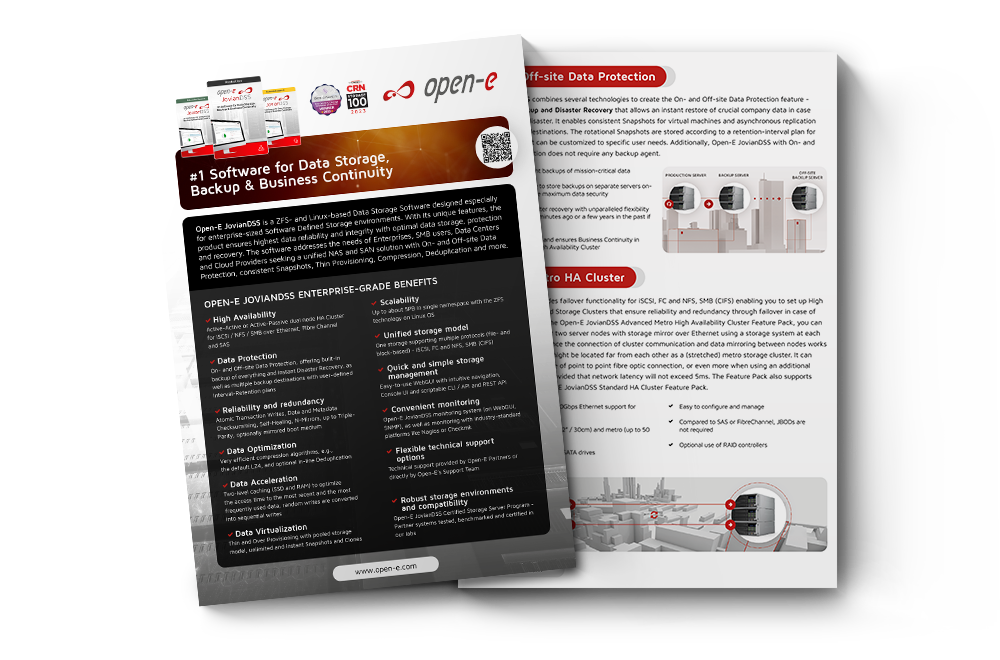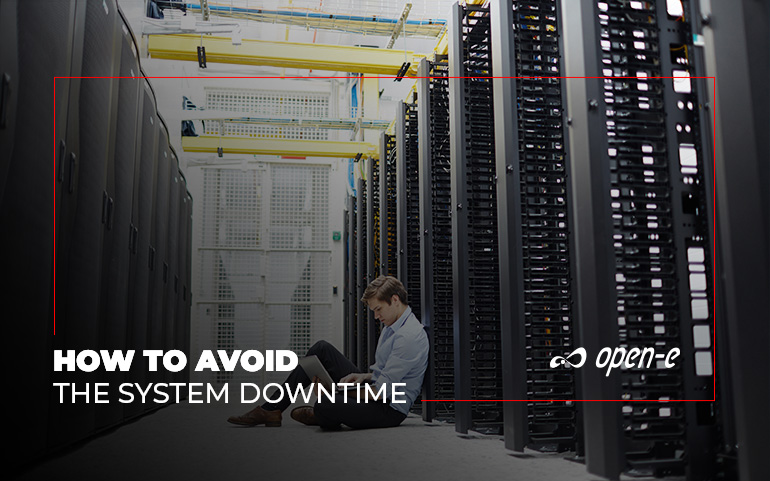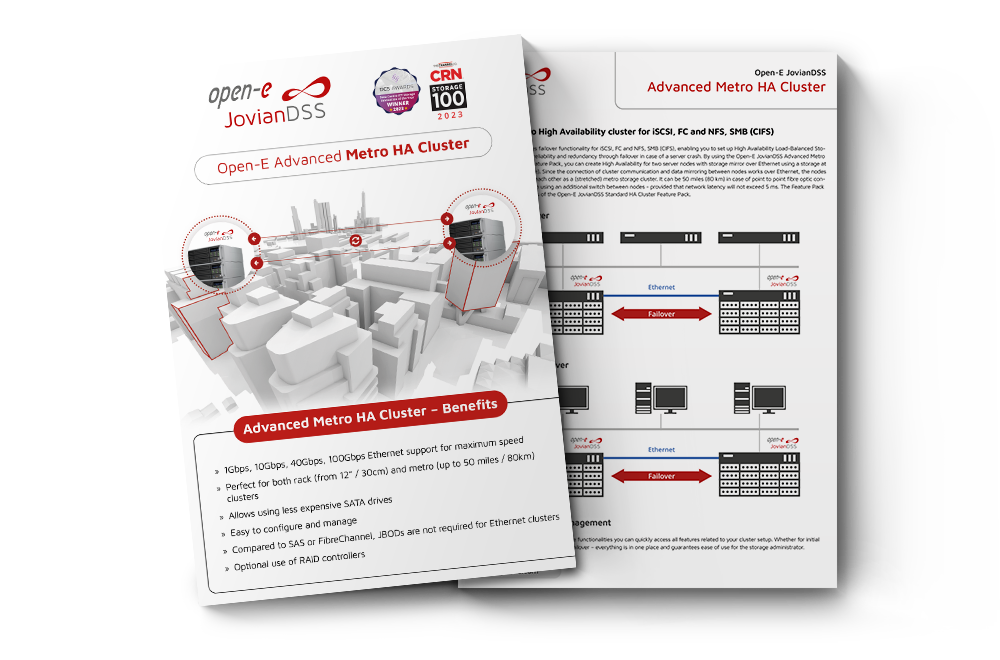Data Sheet
Language: English
Open-E JovianDSS Data Sheet Brochure
Date: Feb 7, 2022
Download the comprehensive Open-E JovianDSS Data Sheet to check the details of the Open-E's flagship data storage software.
Create a reliable, high-performing, and low-latency FC data storage solution with software brought to you by Open-E that simplifies configuration processes and maintenance tasks.

Data Sheet
Language: English
Date: Feb 7, 2022
Download the comprehensive Open-E JovianDSS Data Sheet to check the details of the Open-E's flagship data storage software.

Blog
Language: English
Date: Dec 19, 2023
While every data storage provider is concerned about protection by means of encryption, vividly describing the topics of ransomware, malware, and other kinds of possible hacker attacks, we tend to …

Blog
Language: English
Date: Mar 30, 2023
Technological development in today’s business increasingly depends on the requirements imposed by the data storage protection regulations of the sectors concerned. These specific requirements are closely related to and determined …

Data Sheet
Language: English
Date: Mar 30, 2023
Data loss can have a significant impact on businesses today. With 500 times more data stored than a decade ago, backup solutions are more critical than ever. Learn how to protect your data with our comprehensive guide to data backup solutions

Data Sheet
Language: English
Date: Jan 20, 2020
Read the brochure to learn more about the Advanced Metro High Availability Cluster Feature Pack in Open-E JovianDSS.

Article
Date: Aug 01, 2017
The On- and Off-site Data Protection in Open-E JovianDSS Off-site Data Protection effectively prevents data loss and helps you to achieve maximum data security, especially in High Availability Cluster Setups. Automatic snapshots and asynchronous replication ensure consistent backup that keeps your data safe from theft, ransomware attacks or other disastrous events – with instant access and easy roll-back to previous versions in case of data loss.

Article
Date: Feb 21, 2017
Generally speaking, Hyper-converged Storage is the combination of computing, networking and storage in one unified hardware platform. Using commodity HDDs and solid state drives, the Software-defined Infrastructure automatically takes care of the storage and virtualization. The hardware platform is normally based on cheap x86 hardware which can be easily and cost-effectively scaled to growing requirements for performance and storage space.
Article EOL
Date: Jun 16, 2015
The Avago Syncro™ technology is a solution for businesses of all sizes that require high available storage for high performance, high capacity or hybrid system. The Syncro™ CS solution is a hardware based, high-available DAS which is shared between two head-nodes. In combination with Open-E DSS V7 software, it is possible to create a customized solution for any need, from a high performance SSD storage to high capacity 3,5” HDD server with SDD caching.
Article EOL
Date: Jun 16, 2015
The Avago Syncro™ technology is a solution for businesses of all sizes that require high available storage for high performance, high capacity or hybrid system. The Syncro™ CS solution is a hardware based, high-available DAS which is shared between two head-nodes. In combination with Open-E DSS V7 software, it is possible to create a customized solution for any need, from a high performance SSD storage to high capacity 3,5” HDD server with SDD caching.
Article
Date: Jun 16, 2015
The Failover feature provides High Availability of data. In an iSCSI Failover setup of two servers, data is saved on both servers simultaneously. When one system fails, its processes and all resources are being relocated to and restarted on the second node. The Active-Passive setup allows having all volumes active on one node (the primary node), while the other node has all passive copies and takes over the tasks in case of an emergency (the secondary node). A load-balanced Active-Active Failover on the other hand, doesn’t have a primary or secondary node. It adds extra performance by enabling the user to decide which volumes are active on which node. The failover process is the same, but the servers are able to utilize their full network performance and eliminate the unnecessary cost of idle hardware.